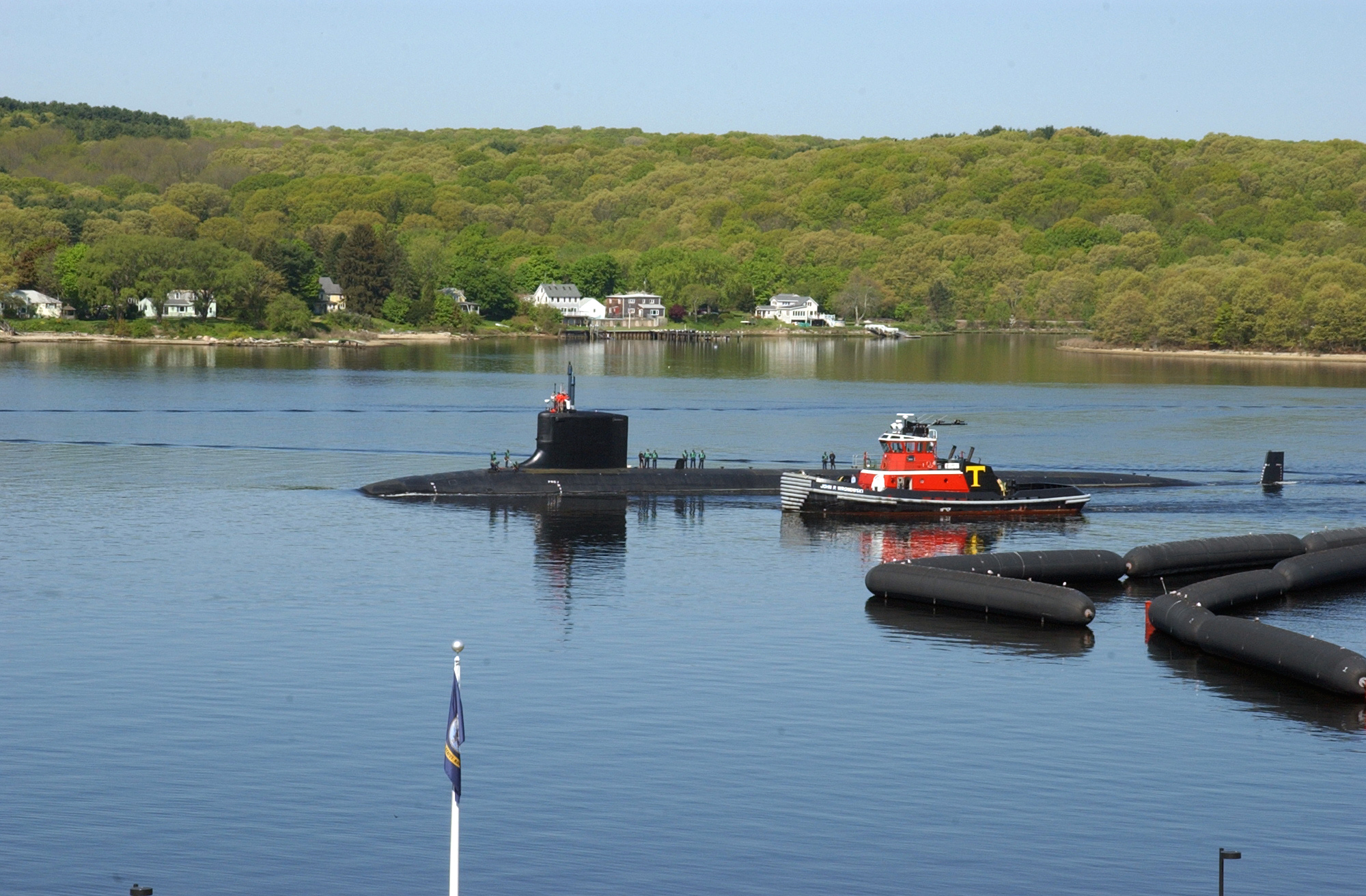Civilization
Why the Future Belongs to the Submarine
The era of the outsized surface ship (including aircraft carriers) is over; that of the submarine has now begun.

In his 2020 book Never a Dull Moment, former Royal Canadian Navy (RCN) aviator George E. Plawski tells us that HMCS Bonaventure, Canada’s last aircraft carrier, was a fine ship in her day. In his words: “In the autumn of 1963, the Royal Canadian Navy was on a roll. The replacement of World War II ships, which allowed the Canadian Navy to effectively assume its assigned NATO role as a modern anti-submarine force, was largely complete, and naval aviation was reaching its peak. Deployed in the carrier HMCS Bonaventure, Tracker and helicopter squadrons consistently outperformed their NATO allies during combined fleet exercises…” (p. 9)
The original advantage of the Royal Canadian Navy in the air
The Bonaventure was only a pocket carrier, and was outclassed by U.S. Navy Essex-class carriers, but regularly outperformed them in operations and exercises due in no small way to the fact that Canadian pilots were extremely well-trained to fly in bad weather conditions that forced the U.S. Navy to cancel flight operations. As I point out in my book Lessons Not Learned: The U.S. Navy’s Status Quo Culture, the Canadians had many advantages over the U.S. Navy.
In 2005, for example, a retired RCN officer told me: “Having served in Bonaventure on many occasions, I can attest to the fact that there were times when our aircraft flew operational missions when our NATO allies decided to keep their aircraft on the deck. You can rest assured that at no time did our operational commanders put our aircraft and crews in flight safety jeopardy. As far as performance is concerned, there was always that pride in carrying out a role in such a manner that encouraged good competition and success in the operation at hand.” (p. 110)
The submarine negates the advantage of the supercarrier
Despite this outstanding record, the Canadian government decided to retire the Bonaventure in 1970, and no replacement was ordered. Many in Canada protested the decision to get out of the carrier business, but looking back, I am now convinced that while it was a painful process, ultimately it was the right decision. Even a great ship like the Bonnie was stalked by Soviet submarines, and probably would have been sunk in short order if she had gone to war against the Soviet Navy.
The same is true of U.S. Navy carriers, and as Admiral Hyman Rickover once said, their life expectancy against Soviet submarines would have been about 48 hours, maximum. In my book, I described how Soviet, Russian, Chinese, Chilean, Australian, Dutch and Canadian submarines, both diesel and nuclear-powered boats, had successfully “sunk” U.S. Navy supercarriers during operations and exercises between 1966 and 2006. (p. 186) Of course, the U.S. Navy never admits that its so-called supercarriers could be taken out so quickly and easily by even older and cheaper diesel submarines, but facts are facts.
The U.S. Navy must recognize that the submarine makes its carrier forces obsolete
Unless the U.S. Navy makes the decision to find alternatives to the carrier-centered forces it deploys around the world to deter aggression and support allies, it is headed for a reckoning that could prove to be disastrous. Recent advances in Air-Independent-Propulsion for submarines, as well as anti-carrier missiles, make reassessment inevitable.
The U.S. Navy has a long record of stonewalling changes to its force structure, but things are not looking good now for the “status quo” Navy. Some have predicted that America might well lose a war against China or Russia at any time, and this short article should serve as a warning to the admirals and defense contractors that the old way of doing business, building more and more expensive carriers, while ignoring mountains of evidence that they will be meat on the table for any competent enemy, needs to end. The U.S. Navy has invested billions of dollars in its carriers, and the decision to retire them will be painful, as it was for Canada in 1970, but the alternative, to risk losing a war against a more competent and innovative peer competitor, is simply much worse.
Toward the future
What is to replace the aircraft carrier? The prescient British historian Sir John Keegan said in 1988 that “The era of the submarine as the predominant weapon of power at sea must… be recognized as having begun. It is already the instrument of ultimate nuclear deterrence between the superpowers, holding at risk their cities, industries and populations as it circles their shores on its relentless oceanic orbit. It is now the ultimate capital ship, deploying the means to destroy any surface fleet that enters its zone of operations.” (p. 327) The future belongs to the submarine, Keegan predicted, and it is time for the U.S. Navy to acknowledge, once and for all, that times have changed.
Notes:
George E. Plawski. Never a Dull Moment: A Memoir of Canadian Naval Aviation, Firebombing and Theatre. FriesenPress. Kindle Edition.
Roger Thompson. Lessons Not Learned: The U.S. Navy’s Status Quo Culture. Naval Institute Press. Kindle Edition.
John Keegan. The Price of Admiralty: The Evolution of Naval Warfare. (New York: Penguin Books, 1988).
This article was originally published by RealClearDefense and made available via RealClearWire.
Roger Thompson is a research fellow at Dalhousie University’s Centre for the Study of Security and Development, the author of "Lessons Not Learned: The U.S. Navy’s Status Quo Culture," and a former researcher at Canada’s National Defence Headquarters.
-

 Civilization2 days ago
Civilization2 days agoDC Pipe Bomb Arrest Raises Questions About Christopher’s Wray’s FBI
-

 Civilization5 days ago
Civilization5 days agoYoo Hoo, VP Vance—Your Character is Showing!
-

 Executive5 days ago
Executive5 days agoThe Last Supper: New York’s Socialist Feast
-

 Guest Columns4 days ago
Guest Columns4 days agoCongressional Leaders See Far Higher Stock Returns Than Peers
-

 Civilization3 days ago
Civilization3 days agoThe Legal Logic Behind U.S. Operations Against Narco-Terrorist Networks
-

 Civilization5 days ago
Civilization5 days agoFacing Facts & Rolling Back Mythologies: The New National Security Strategy
-

 Civilization4 days ago
Civilization4 days agoHow Trump Changed America
-

 Executive3 days ago
Executive3 days agoNewsom’s ‘National Model’ for Homeless Wracked by Fraud












